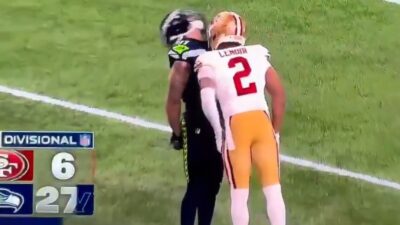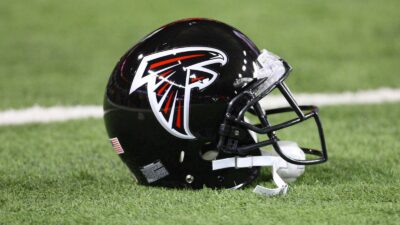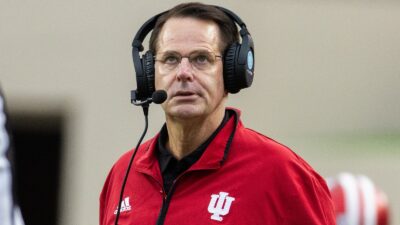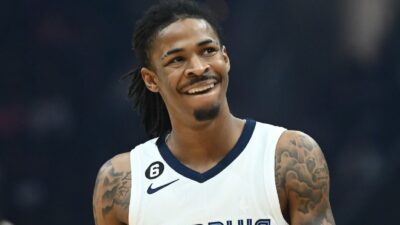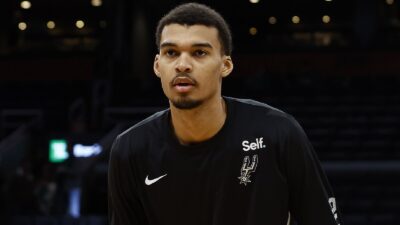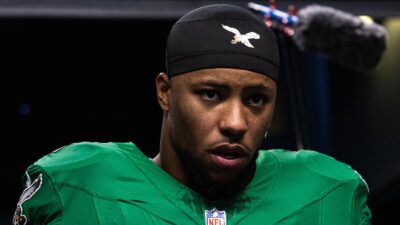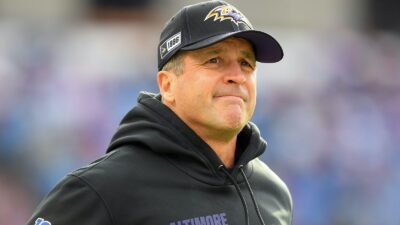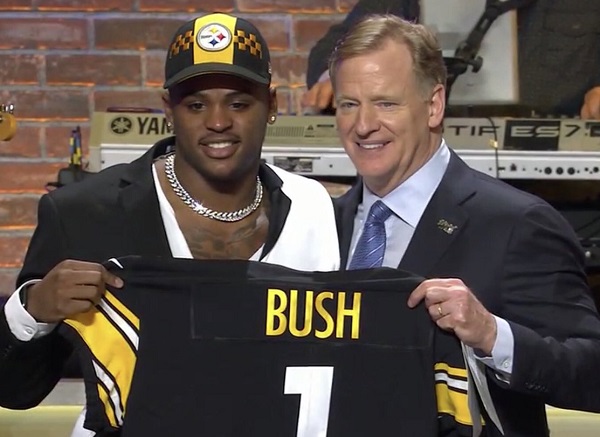
The 2019 NFL Draft started slow when it came to trades. None of the first nine picks were traded, and only one trade occurred in the first twenty picks. But things then went crazy, and we saw five trades at the end of the first round, so that by its conclusion, it was a typical first round with six total trade moves.
Here is my breakdown of each of those moves, recounting the value given up and gained, and a look using my wins-added value chart and how players need to turn out to justify the trade.
Steelers trade up to No. 10 for Devin Bush, gives up 20th overall, 52nd overall, and a 2020 3rd round pick to Broncos
Pittsburgh strategically moved in front of the Cincinnati Bengals in order to get the only other top inside linebacker option in the draft, after Devin White had earlier gone to Tampa Bay. Both of the AFC North rivals had needs at the position, with the Bengals finally moving on from Vontaze Burfict, while Pittsburgh is looking for an impact player at the position that they have not had since Ryan Shazier’s injury.
So from a strategic standpoint, the Steelers definitely did what they had to do to jump directly in front of a team that might have taken Bush.
From a value standpoint, if you look at the traditional value chart, then the compensation was dead even–if you apply the NFL logic of “one round for one future year” so that the 2020 third round pick is valued the same as this year’s fourth-round pick. Even with applying the third round value, it’s fairly even (1300 points for the 10th pick versus 1420 for the package the Broncos got).
By my value chart, which is based on historical data and can be converted to wins above replacement, the Steelers paid more like 1.20 cents on the dollar to get their man. The expected wins added of the 20th pick and 52nd pick alone are equal to the 10th overall pick. The future pick is a bonus for Denver and accounts for the surplus value in this trade.
If you convert my draft value chart to wins, the Steelers can be expected to get 1.6 wins above replacement over the first five years with the tenth pick, while they gave up 1.9 wins above replacement.
How good does Bush have to be to justify this trade, wherein they surrendered 1.9 wins above replacement to move up? If he has a five-year start to his career like Jonathan Vilma (69 games started, one Pro Bowl) then that would be about the break-even point, and if he can be a perennial Pro Bowler then the Steelers made a good trade. The expectation with the trade-up has to be that he is an impact middle linebacker capable of becoming a Pro Bowler.
Denver, meanwhile, used the first pick they received in this deal on tight end Noah Fant. You wonder if they had his Iowa teammate T.J. Hockenson in mind, but Hockenson was taken at eighth overall. In order for Denver to get average value for Fant at the 20th pick, the first five years of his career needs to look like Chris Cooley or Zach Ertz, and Fant needs to probably be a top 10 tight end by his third year in the league.
Packers trade up to No. 21 to take S Darnell Savage, Jr., Seahawks get picks 30, 114, and 118
This one is an interesting one. It’s not clear why the Packers felt the need to trade up to this spot. There was very much a split opinion on who the top safety was in this draft, and none of them were consistently going in the first round in mock drafts. Maybe they had some intelligence that someone else was targeting him and couldn’t wait, but other than Seattle themselves, I am not sure who was strongly looking at taking a safety over the next few picks.
Nevertheless, the Packers got their choice at safety, before any others were drafted. If they are right they got the top safety in the draft.
By the traditional draft value chart, it is also interesting. Seattle “settled” for less than full points to get this done. (The 21st pick is assigned a value of 800 while the three picks Seattle got add up to 744). Seattle came into this draft with only four picks, until they also acquired the 29th overall pick with the Frank Clark trade. With this move, they now have seven.
By my wins-added value chart, though, this was about even, with Seattle still getting slightly more value (35.3 versus 37.6, or converting to wins, 1.1 wins added versus 1.2 total for the three picks).
How good does Savage need to be to break even on the value given up? Interestingly, just a bit better than Ha-Ha Clinton-Dix, who also was the 21st overall pick five years ago for the Packers, and has started 74 games in five seasons.
Eagles trade up to No. 22 to get OT Andre Dillard, Ravens get picks 25, 125, and 197
By the traditional pick value chart, this one was done by the book and exactly even, with 780 points of value on both sides. By my wins-added chart, the Eagles gave up about 111 percent of value to make the move, giving up 1.2 wins added across three picks to get 1.1.
But I love this move by the Eagles to make a slight move up. It was tactically done to get just in front of Houston, with Dillard still available at pick 22. Houston was going to take a lineman and there is a very good chance that it was going to be Dillard. Instead, they selected Tytus Howard at the same position as soon as the pick was made.
Dillard is arguably the best offensive tackle prospect in the draft, and he definitely had the best athletic measurables at the Combine, and also was the best pass protector in college playing in Washington State’s system.
He doesn’t have to be a perennial Pro Bowler for this trade to make sense for Philadelphia; he just needs to be a capable starting tackle. But if he is a future Pro Bowler, this was a great trade.
Meanwhile, Baltimore selected Marquise Brown as the first wide receiver off the board. Brown just needs to develop into a quality second starter at receiver to match the median wide receiver pick at that point in the draft.
Redskins trade up to No. 26 to get Montez Sweat, Colts get pick 46 and a 2020 second-round pick
I love this trade for both teams. Montez Sweat was projected as a top-10 type talent in this draft, then had the heart issue that was, maybe, misdiagnosed at the Combine. At No. 26, he was an extreme value. So Washington was willing to pay a premium to get him above what a normal 26th pick would be worth.
The Colts, meanwhile, got great value because they were willing to defer compensation for a year and get half of the value of this trade in the next draft. By the pick value chart, they got 860 points of value (if you assume a mid-second round pick in 2020) versus giving up 700.
My wins-added estimate is very similar. Washington paid about a 120 percent premium to trade up. But if Montez Sweat is simply a decent pass rusher (think Bruce Irvin, 29 sacks in first five seasons) then this trade was a solid one, and if he turns into one of the best defensive ends in this draft, it is a great one.
Giants trade up to No. 30 to take DeAndre Baker, Seahawks get picks 37, 132, and 142
This is yet another trade where the Seahawks were willing to take a little bit less than the traditional chart says, in order to accumulate picks, while still getting positive value based on my wins-added chart (1.0 wins added versus 0.9 surrendered).
The Giants traded up to take the first cornerback off the board, DeAndre Baker, which is an amazing fact. Other cornerbacks who were expected to go, like Greedy Williams and Byron Murphy, will be available in the second round. Baker needs to be a good starting corner, but not a consistent pro bowler, to make this trade work for New York.
Falcons trade up to No. 31 to take Kaleb McGary and also got pick 203, Rams get picks 45 and 79
Atlanta clearly came into the night wanting to address the offensive line, as they earlier took G Chris Lindstrom, and then made the move up to take Kaleb McGary. It’s obvious that Jawaan Taylor, who fell completely out of the first round, must have major medical concerns with the knee that are removing him from team boards. If that’s the case, and with Tytus Howard already going early, then McGary and Dalton Risner are the two offensive tackles left. Atlanta clearly felt he wasn’t getting to them in the middle of the second.
Interestingly, the traditional draft value chart would say the Falcons actually paid a premium to move up: 645 points surrendered versus 610 gained.
Ordinarily, if the traditional chart thinks a team overpaid, my chart would be even more in that direction. But this is a lesson in the value of some lottery tickets late in the draft. By wins added, the difference between the late first round and mid-second is actually slightly larger than the difference between a mid-third and that late sixth round pick. My chart has the values as:
31st pick- 27.4
202nd pick- 2.2
45th pick- 19.7
79th pick- 9.1
So by my chart, this one is about even, with the Falcons getting ever so slightly more potential value on average by having the Rams throw in that lottery ticket late to get it done.
McGary just needs to be a starting caliber right tackle to make this one work for Atlanta.
OVERALL SUMMARY
There were six trades, but none featured massive moves that required major overpays, with only the Pittsburgh move qualifying because it threw in a future third. For the most part, teams made reasonable moves up. While the traditional chart still appears to be a key source, you can also see some teams willing to adjust off it. Seattle in particular got solid value to move down twice, but got less than the traditional chart would require for those moves. Seattle came into the draft with few picks and clearly adopted a strategy of adding more picks to increase their chances of a hit, suggesting they like their chances on those middle round picks that tend to be more boom or bust


